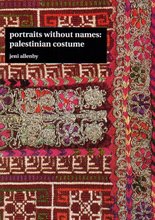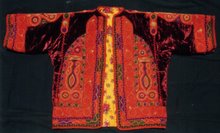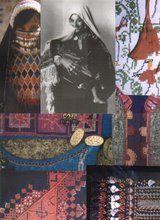 |
| The Nassar Family's "Mousakhan with Game Hens" photo source: Chronicle / Craig Lee |
What interested us about the recipe given in the article is that it provided an interesting example of diasporic adaptation. The Nassar family cooked the dish with game hens rather than chicken, and created individual "musakhan" serves (on small rounds of bread) rather than the traditional "wrapping" in bread. You can see the scrumptious looking results in the photo above.
We've seen - or eaten - other diasporic versions that incorporate spices like allspice and saffron. This family added paprika. Sumac by the way is a tart lemony flavored spice made from the ground dried berries of a bush that grows wild throughout the Middle East. Boneless chicken versions also exist. Some recipes grill the chicken rather than bake it. Some roast it with onions and then bake it wrapped in bread. The variations are endless but we reckon they probably all taste pretty good.
We thought we'd share the recipe for Musakhan that our director modified for cooking easily in the West. Our Palestinian great grandmothers would probably observe it with horror but we guarantee it tastes absolutely terrific, and provides an instant comfort food hit for any homesick Palestinian visitors. We are always begging her to make another one. It's incredibly simple to make.
Director Jeni's Musakhan
(for four people)
What you need:
- 2 chicken breasts off the bone, roughly chopped into large pieces
- olive oil
- 4 large onions, sliced
- 3 tablespoon ground sumac
- 2 or 3 pitta breads for cooking, preferably the plumper soft ones made with a little yeast. Turkish pitta is good. Also another few pieces of bread to eat with the chicken
- Medium size casserole with tight lid, which looks good enough to serve direct on the table
What you do:
- Fry onions in olive oil (and a little butter if you like the dish oily like Palestinians).
- When onions are just brown, add sumac, stirring for 2 minutes.
- Grease the bottom and sides of a casserole dish with oil. Place one round pitta bread at the bottom. It should be big enough for the bread to come up the sides of the dish. If they don't cut strips from a second piece of pitta. Basically you want the bottom and sides lined with bread.
- Place the uncooked chicken in the bottom of the casserole so that the bottom is evenly covered
- Place the cooked onions on top of the chicken. The chicken should be completely covered in a very thick layer of onions. Pour the sumac and oil from the bottom of the frypan over the onions. If you like it very oily the traditional Palestinian way, pour some more olive oil over the top.
- Cover the onions with the last pitta piece. You don't need a perfect seal but make sure it fits snuggly.
- Sprinkle a little water on top of the pitta, then cover with casserole lid (if no lid, make a cover from aluminium foil)
- Bake in a moderate heat oven (180°C) until cooked. You can check by lifting the lid and pitta bread top (be careful of escaping steam) and sticking a knife into the thickest chicken pieces. If the juice runs clear its cooked.
- While cooking the main dish, fry pine nuts in the spices left in the frypan, or roast in a little olive oil
- When main dish is cooked, lift the bread lid carefully and scatter pine nuts, then replace bread lid
- Serve in the casserole with the bread top, direct onto the table, with other favorite Palestinian / Arab dishes, or just a rice pilaf and the extra rounds of pitta
- When serving the dish up, make sure the serving spoon cuts down to the bread base, so that each spoonful contains chicken, onions and the yummy bread at the bottom full of cooking juices. If you prefer it traditionally oily then scoop up more of the sumac flavored oil at the bottom. Don't eat the bread lid, it will be far too dry!
- Enjoy!






























1 comment:
I tried it. It was really good, thank you! And so easy. Can you please publish more "diasporic adaptations"!
Post a Comment